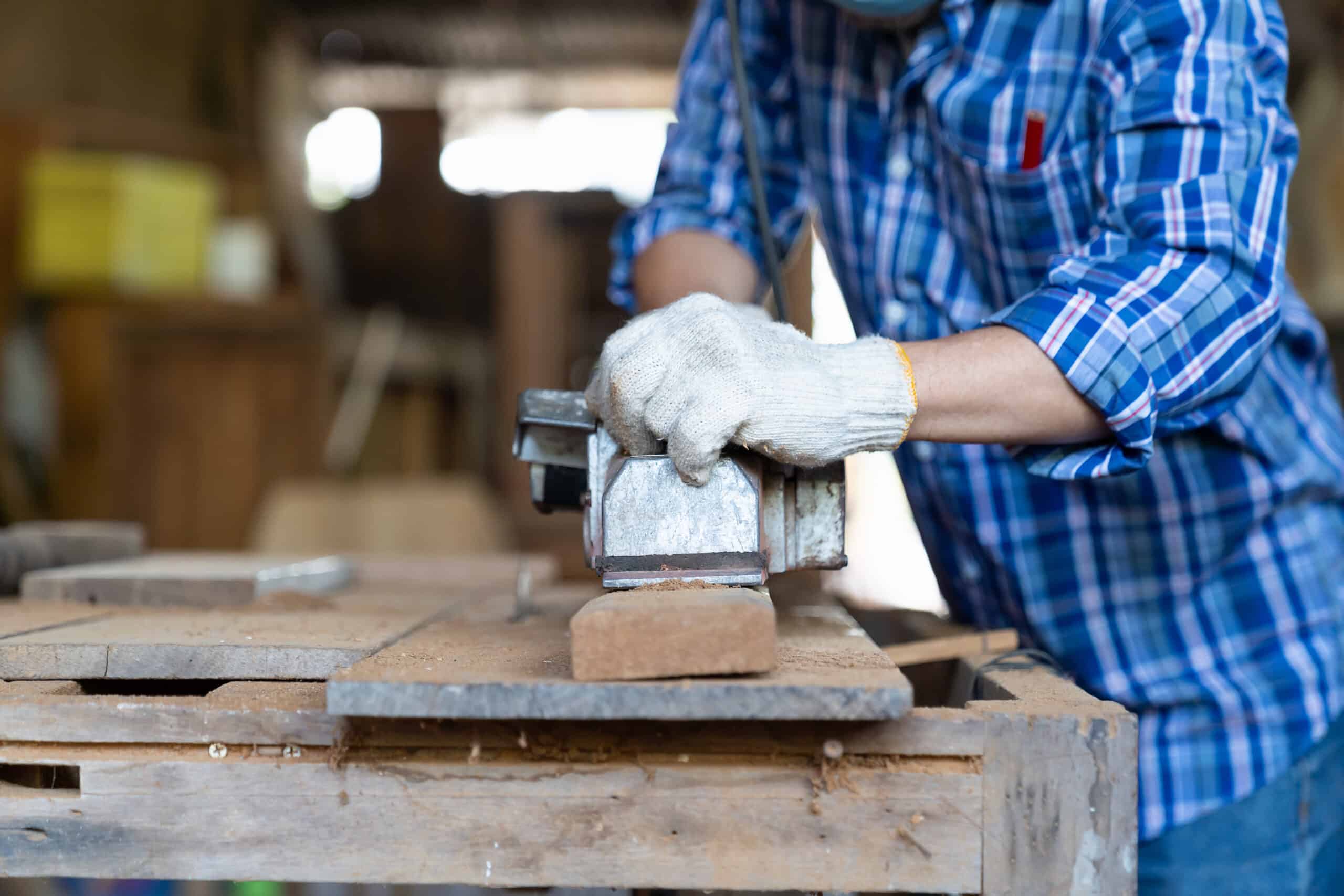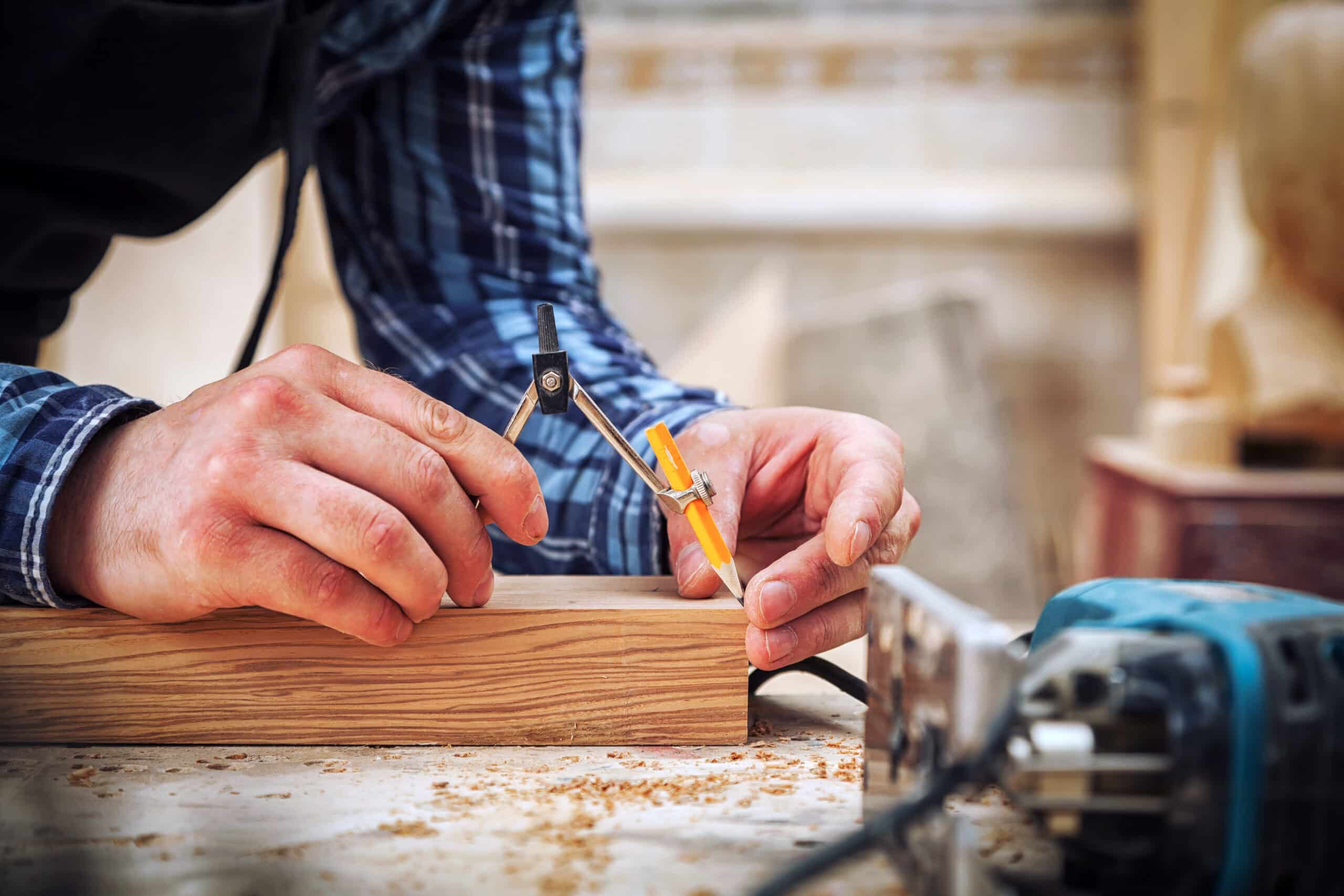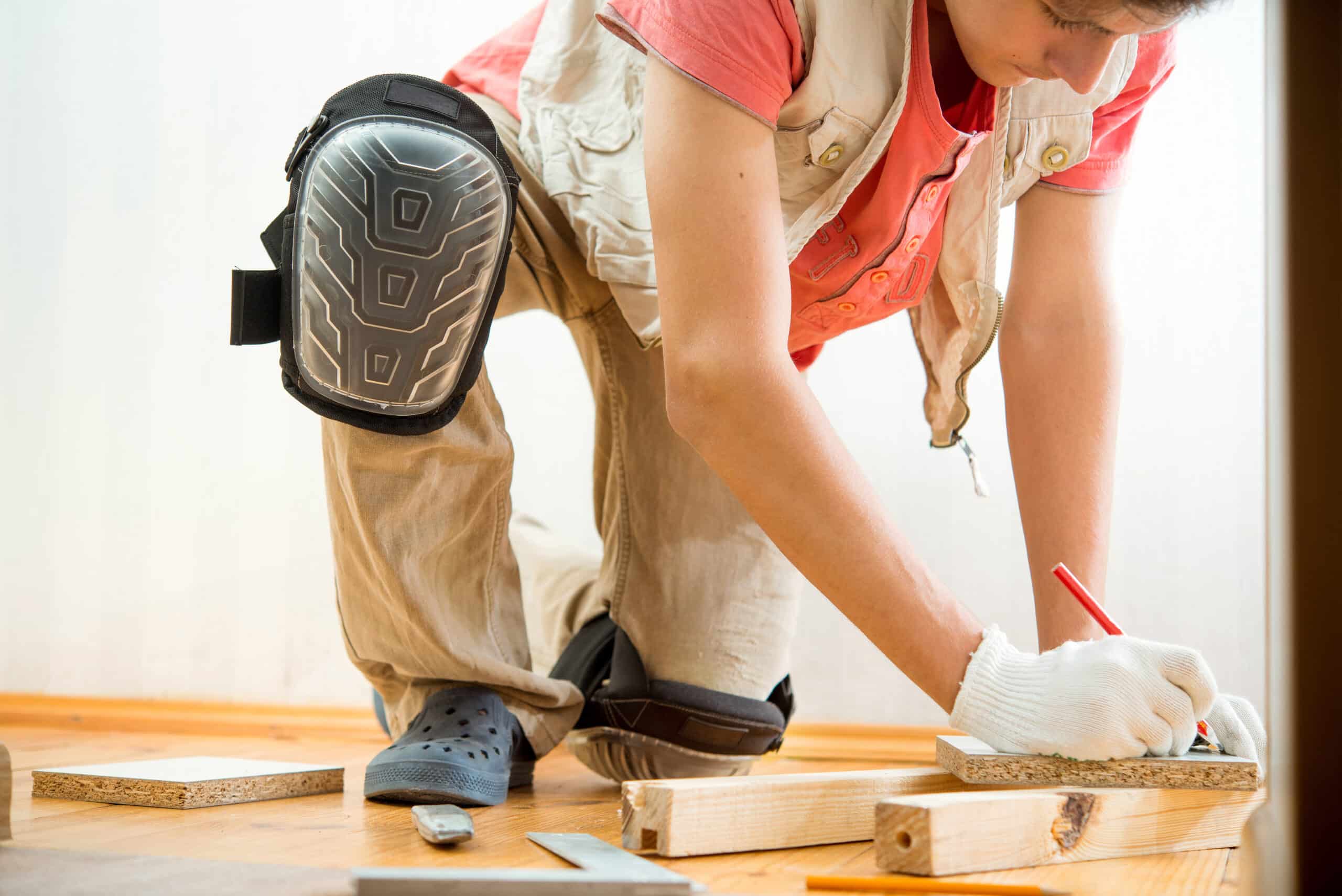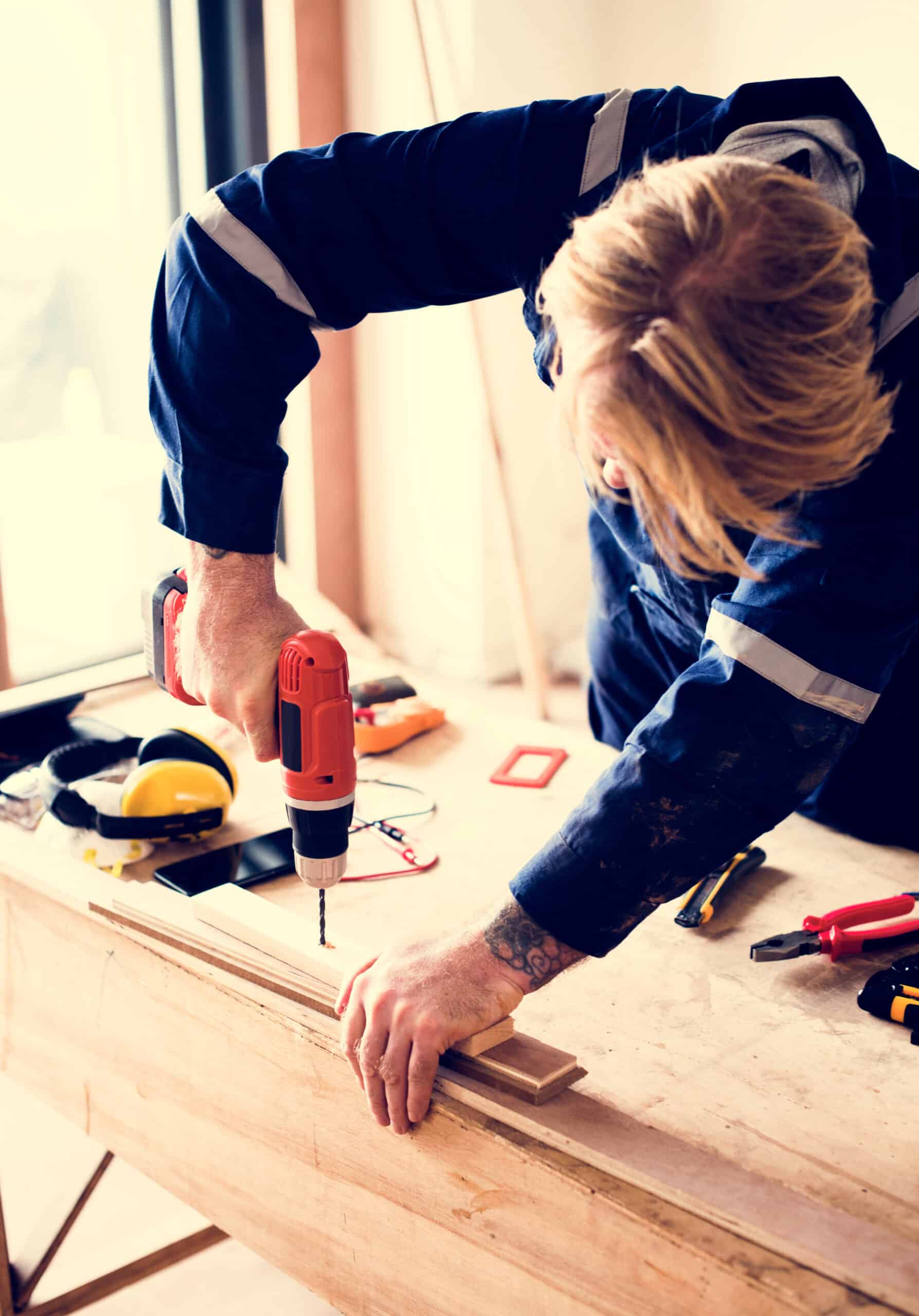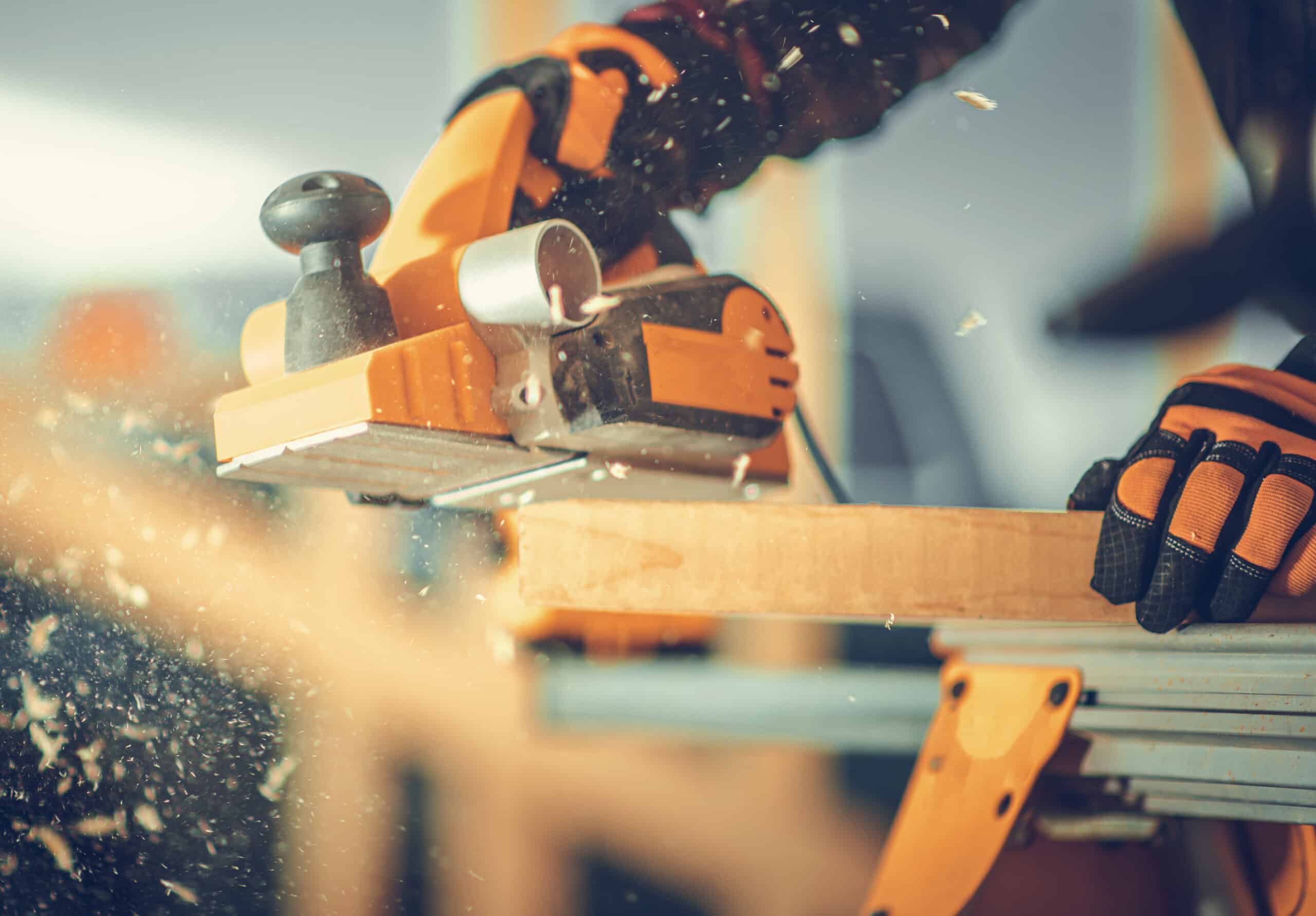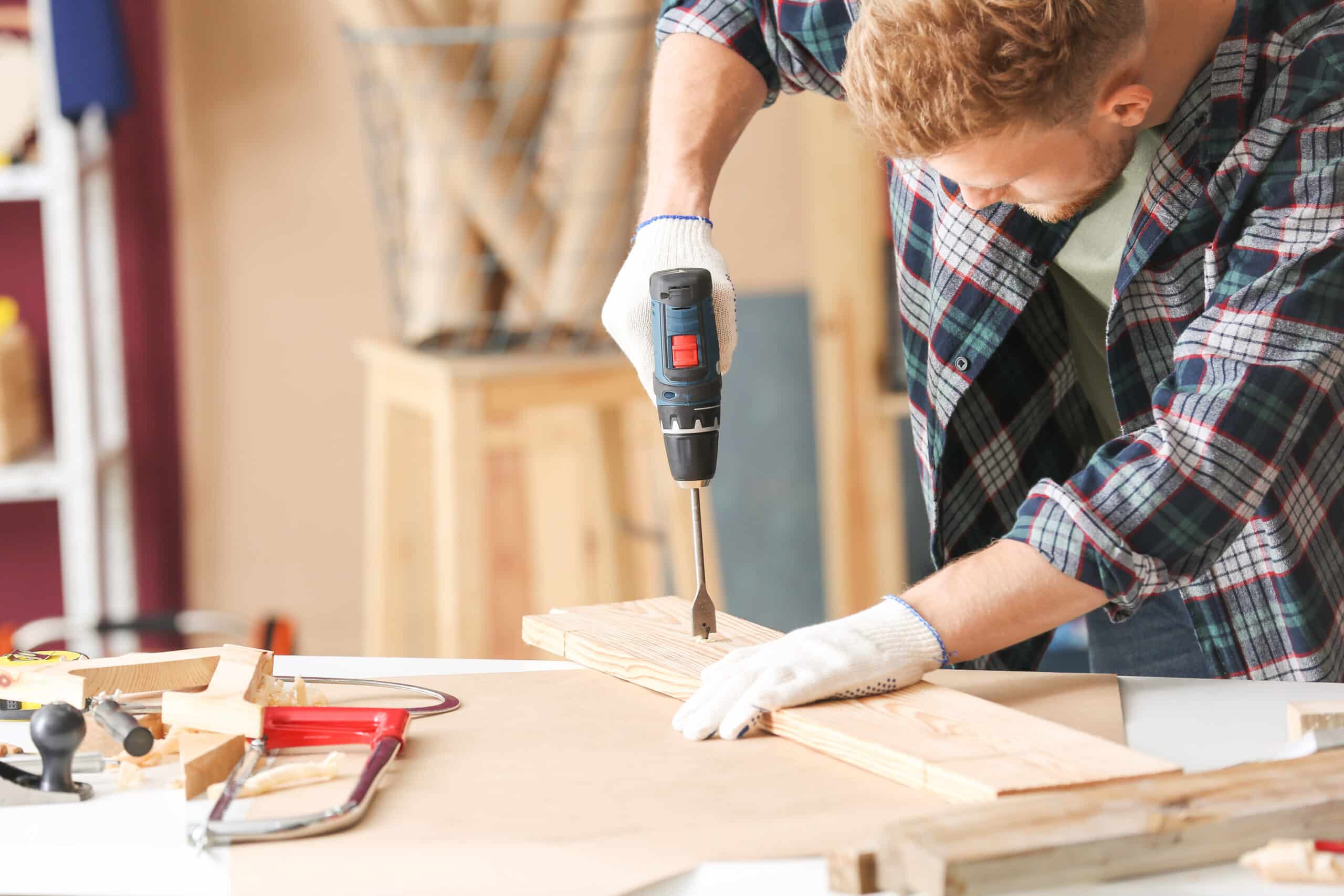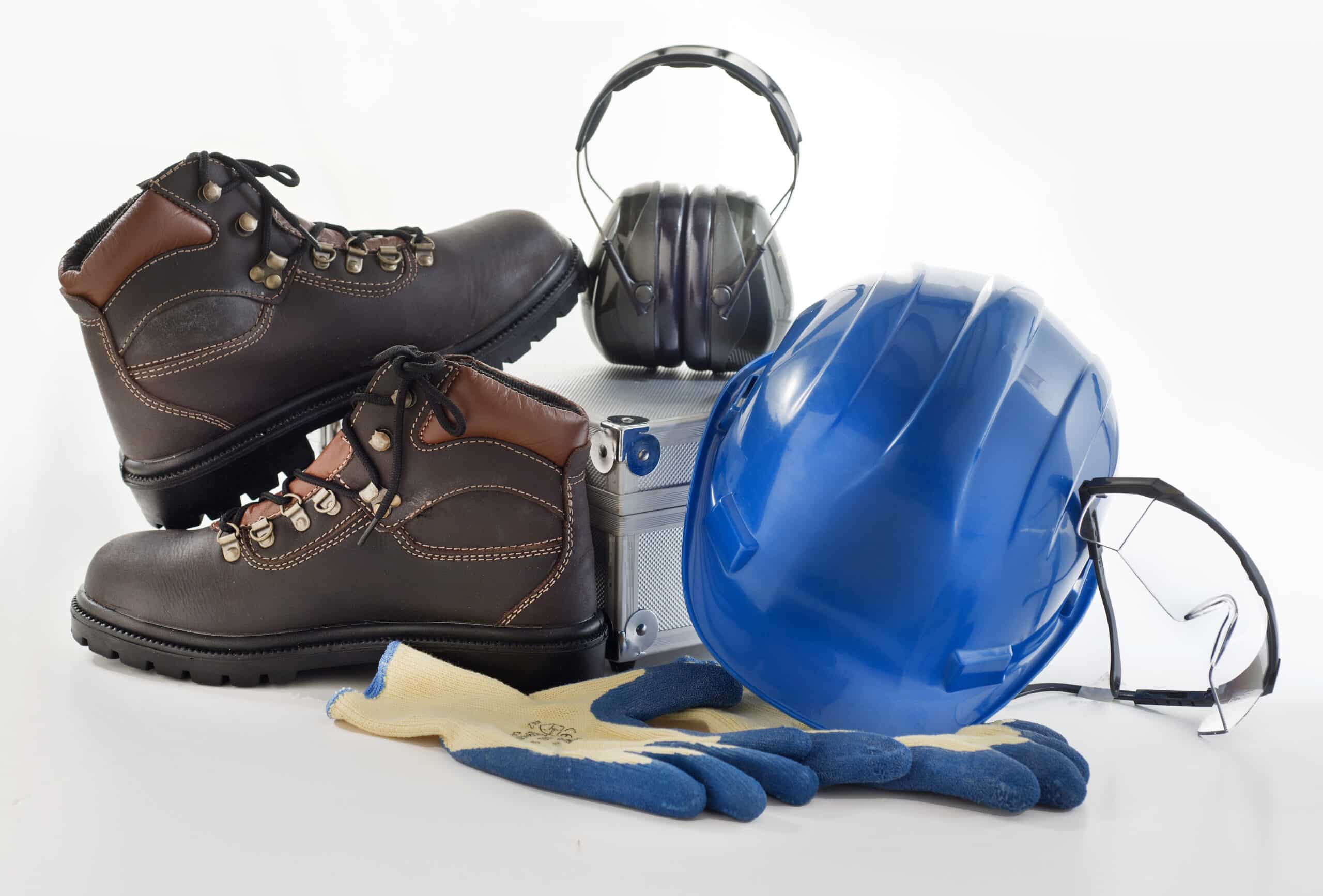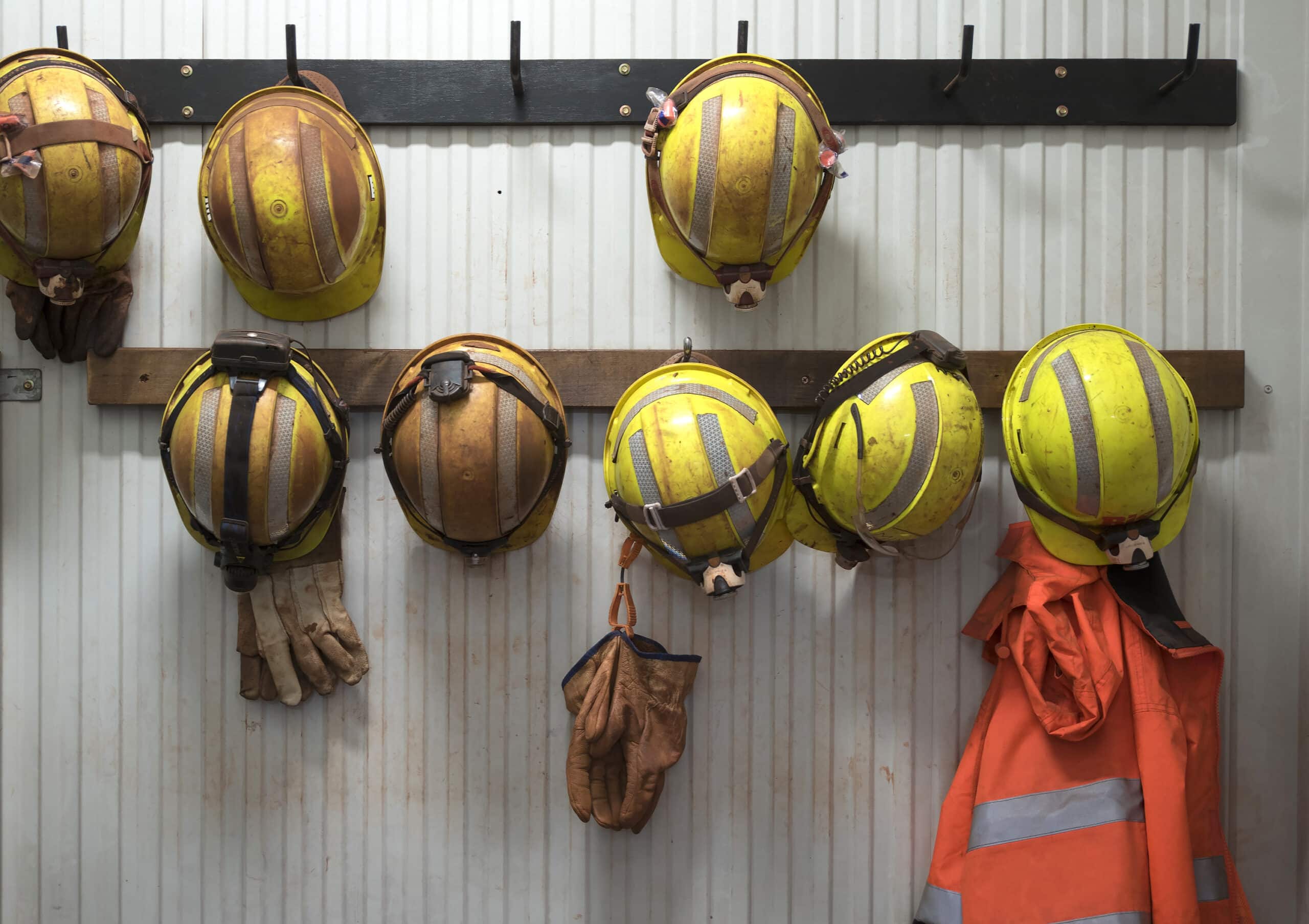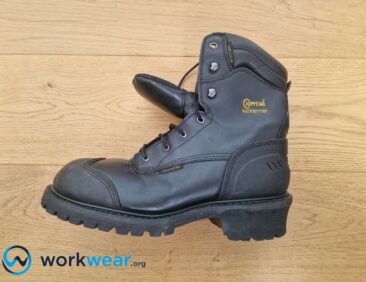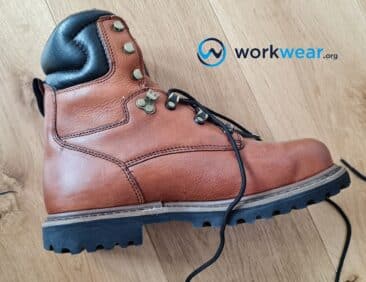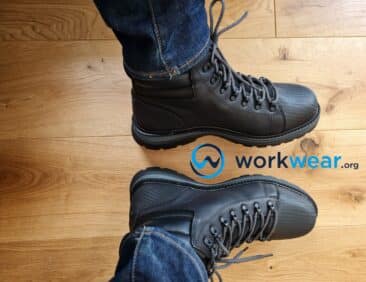Work Wear PPE Requirements for Carpenters
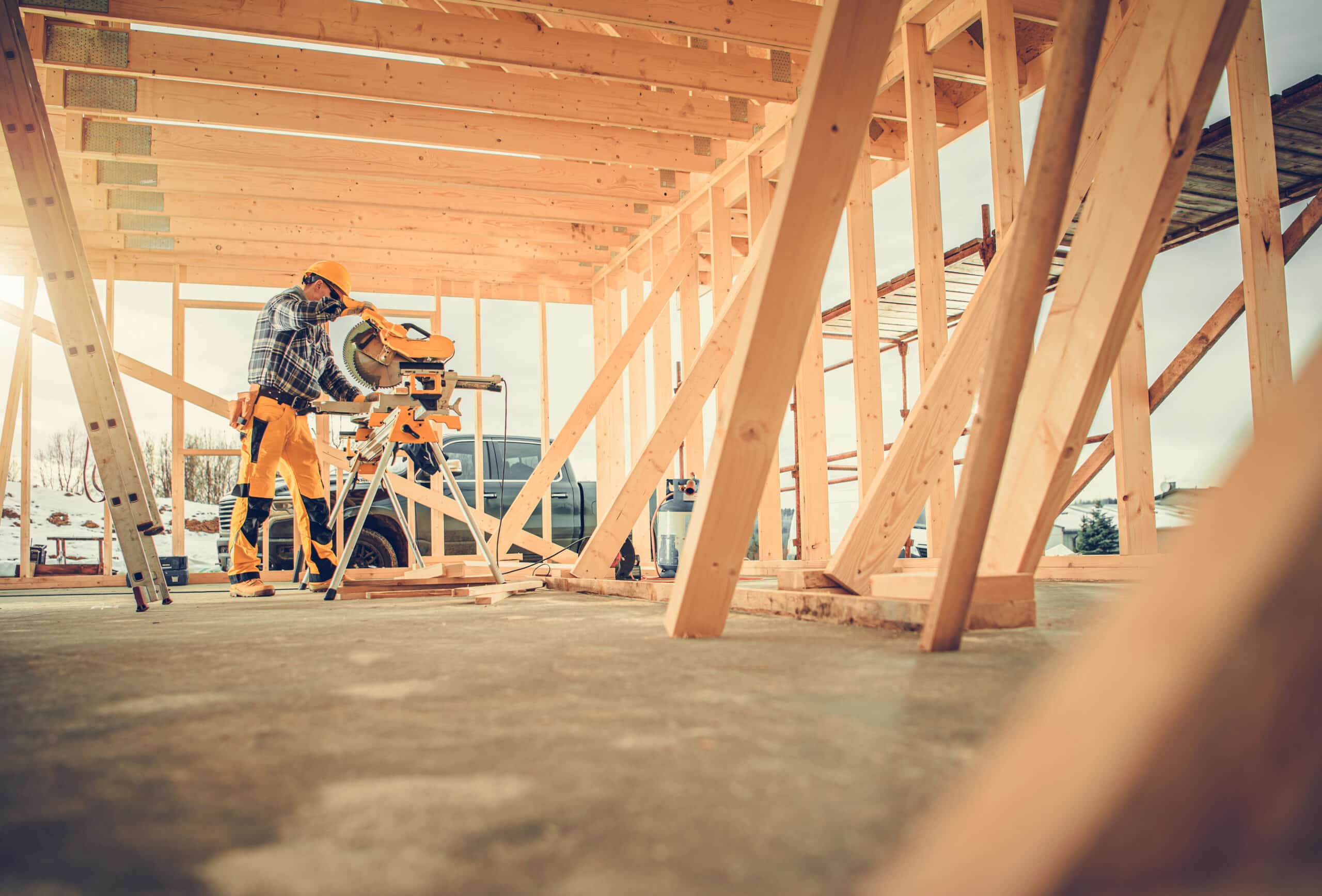
In 2021, there were almost 670,000 carpenters in the US. Most, if not all, of these professionals are exposed to hazardous conditions when working on building homes and much larger structures or even while installing fixtures. Regular exposure to tools, equipment, and potentially unsafe environments makes it crucial for carpenters to have the necessary personal protective equipment for a safer working experience. The appropriate work wear can help prevent injuries in the workplace, making it easier and more comfortable for carpenters to finish their tasks without compromising safety.
Body Parts Affected by Injuries
According to the US Bureau of Labor Statistics, these are the body parts most commonly affected by nonfatal injuries for carpenters.
Hands
Carpenters use their hands for most tasks, so it isn’t surprising that these body parts experience the greatest number of injuries. Cutting and shaping wood requires tools and equipment such as sanders, saws, and chisels that may accidentally slip from their intended position, causing injuries that may include cuts and bruises. Handling wood without the proper protective gear can cause abrasion and blisters on the hands. Meanwhile, the hands can also experience fractures and sprains when lifting heavy objects and doing repetitive tasks for long periods. The hands are also exposed to a high risk of puncture wounds from sharp objects, such as nails and pieces of glass.
Back
Carpentry and construction tasks require a lot of squatting, bending, and heavy lifting – activities that all place unnatural stress on the lower back. The problem and pain become even more pronounced as carpenters do these daily tasks. Equipment and construction materials aren’t the only heavy items that need to be carried by carpenters, whose backs can also be fatigued by tool belts that need to be lugged around for most of the day. Pushing or pulling on heavy items and twisting the body quickly to get certain activities done can strain the muscles in the back and cause injuries or chronic back pain.
Knee
Heavy lifting may strain the back and arm muscles and the knees, especially if the lifting position isn’t correct. Repetitive movements while carrying significant weight (from construction materials, pieces of equipment, and other items) may lead to tiny tears in the knee’s tendons or ligaments. If this happens, the knees can swell and become painful, causing movement difficulties in and out of the job site. Knees can also become inflamed when carpenters kneel on hard surfaces (such as concrete floors) for prolonged periods, as most of the body’s weight is concentrated on that body part. Carpenters can also hurt their knees when these body parts are exposed to impact – such as when pieces of heavy equipment bump against the knee – or with fall accidents.
Ankle
Carpenters may constantly need to walk over uneven paths or floors strewn with wood, cement blocks, equipment, and other items. When stepping over such conditions, the ankle can accidentally rotate, leading to sprain and sometimes even fractures. An ankle injury may also result from a worker falling from an elevated area and landing on the ankle, causing it to twist or, worse, get broken. A sprained or heavy falling object can also cause a broken ankle that carpenters may be exposed to on the work site.
Shoulder
The repetitive nature of their tasks exposes carpenters to shoulder problems. The rotator cuff, consisting of tendons and muscles surrounding the shoulder joint, can be injured with consistent heavy lifting as well as other rhythmic motions. The shoulder may also be harmed when it bumps into something hard or during a fall accident.
Events that Lead to Nonfatal Injuries in Carpenters
- Impact from equipment or objects – Carpenters work in areas often surrounded by construction materials, tools, and equipment. These can bump into different body parts (and vice-versa) and cause injuries, especially if there’s no personal protective equipment in place.
- Falling to a lower level – When building or installing structures, carpenters may be required to work in elevated areas or near openings where they can fall through. This may cause serious harm to the body parts that take the brunt of the fall.
- Fall on level ground/same level – Carpenters can be injured from a fall even if they don’t go to high areas. Falling on the same level or on the level ground may be due to slipping or tripping or as a result of being struck by large or heavy objects in the surrounding area.
- Slipping or tripping – Construction sites and areas where carpentry work is done aren’t always the cleanest or most organized places. The floors that carpenters walk on may be strewn with items (such as wood blocks, discarded materials, and tools) that can increase the risk of tripping or falling.
Important PPE/Workwear
The right safety gear will protect against serious injuries on the job site. Here are the PPE (personal protective equipment) and work wear that carpenters need for safer experiences in the workplace.
Gloves
Gloves cover the hands to protect them from injuries that may be sustained while doing carpentry work. They act as protective barriers so the skin won’t be splintered or harmed when handling wood and other abrasive materials. Gloves for carpenters are ideally made with durable materials – such as polyethylene and cowhide leather – that protect the hands against punctures and abrasion but are still flexible enough not to hinder natural, comfortable movement. In addition, cut-resistant gloves keep carpenters’ hands safe from getting cut by tools, equipment, and other items that can cut or puncture the skin.
Safety boots
Safety boots have built-in toe caps that shield the feet against impact and compression threats. These boots prevent grave crushing injuries in case large wood blocks, heavy tools, and other items in the work area are accidentally dropped on the footwear.
Goggles
Goggles keep the eyes protected against pieces of wood, metal, and other materials that may accidentally fly around and potentially cause eye injuries while doing carpentry work. They form a barrier to protect the eyes from the irritation caused by small particles, such as dirt, around construction sites and outdoor areas. Goggles help prevent temporary or long-term eye damage that flying fragments can cause. Regular eyeglasses can be worn on the job site, but they don’t provide the high level of protection against debris that wraparound goggles deliver.
High-visibility clothing
When working at night and in conditions that have limited lighting sources, carpenters will benefit from wearing high-visibility clothing, such as a reflective vest. Such clothing items make it easier for workers to be seen in low-light conditions for increased safety in the workplace.
Ear protection
Loud noises are often associated with power tools that cut and shape wood, such as sanders, drills, and saws. Carpenters always exposed to such loud sounds need ear protection in the form of earmuffs and earplugs. This can significantly prevent long-term hearing problems, especially with exposure to noise over prolonged periods.
Dust mask
Tiny dust particles that are created by working with power tools can irritate not only the eyes but also the breathing passages. A dust mask stops these particles from getting in the nose when breathing in to minimize dust irritation greatly. The mask also prevents the particles from reaching the lungs, especially with frequent exposure.
Hard hat
Doing carpentry work on homes and larger structures may include risks of objects falling from high areas. These items can range from construction materials to tools that are not secured properly on elevated spots in the work area. A hard hat offers superior protection in case of objects accidentally drop, preventing serious head injuries in hazardous worksites.
Full face shield
When using machines to grind or cut wood and metals, pieces can fly in all directions. A full-face shield can protect the face, keeping metal or wood chips from injuring the skin and facial structure while using machines such as a lathe. Carpenters can rely on clear face shields to offer protection from harmful particles without obstructing their vision, ensuring that the tasks can be done safely and efficiently.
Carpenter’s apron
A carpenter’s apron protects clothing from getting stained or damaged by chemicals (such as glue or paint) while on the job site. It also forms a barrier that protects the torso from getting injured by flying bits of wood and other debris that can be created when using cutting or shaping wood. The aprons often have at least one pocket where small tools can be stashed for easy access while doing the required tasks.
Conclusion
Personal protective equipment is essential for carpenters who often work in areas surrounded by potential safety threats. Carpenters are constantly exposed to dangerous environments and items, so having the proper safety gear is crucial in ensuring that injuries can be avoided while successfully completing the required tasks. The protective work wear significantly reduces the risks of serious harm, promoting increased safety and continued productivity for carpenters who work in the most challenging job sites.
References
Statista – https://www.statista.com/statistics/1087665/number-carpenters-united-states/
US Bureau of Labor Statistics – https://www.bls.gov/iif/oshwc/case/osn-carpenters-2015-19.html
Institute for Work & Health – https://www.iwh.on.ca/summaries/research-highlights/some-tasks-put-carpenters-at-higher-risk-for-low-back-pain
OrthoInfo – American Academy of Orthopaedic Surgeons – https://orthoinfo.aaos.org/en/diseases–conditions/patellar-tendon-tear
FAQs
- Are regular prescription eyeglasses safe for carpenters on the job site?
- No – it’s much safer to use safety goggles that protect the eyes against flying debris. To ensure eye safety as well as a clear vision while working, it’s best to use prescription safety glasses/goggles that can be customized with the correct grade.
- Do carpenters need insulated safety boots?
- They do if they’re working in cold environments, such as in sub-freezing and other low-temperature settings. Otherwise, insulation isn’t needed and may bring discomfort as the boots turn too hot with prolonged use.
- Can wool or fleece gloves keep carpenters’ hands safe in the work area?
- No – the materials of these gloves won’t protect the hands from cuts or puncture hazards. The best carpenters’ gloves are made with materials that offer strong cut resistance, ensuring that the hands won’t be seriously injured when accidental exposure to puncture or cutting hazards, such as sharp tools and equipment.
- Which option provides a higher level of ear protection against noise – earplugs or earmuffs?
- Earplugs generally offer more protection against loud noises than earmuffs. This is because the plugs are designed to be fitted snugly into the ear canal, blocking more external sounds compared to earmuffs that are worn over the ears.
678+
Products Reviewed
24+ Years
Combined Experience
500+ Hrs
Field Testing
